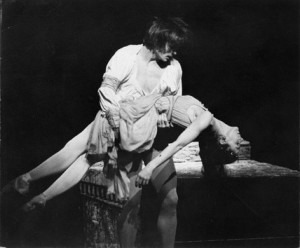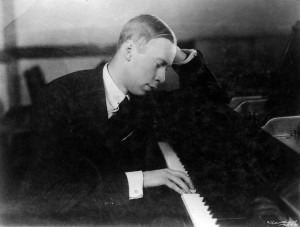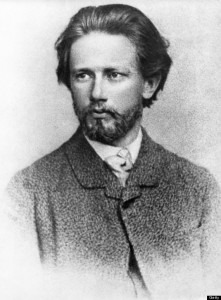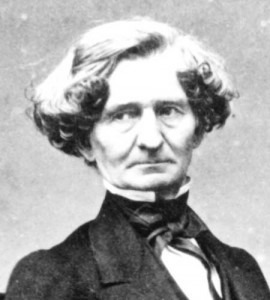
Margot Fonteyn and Rudolph Nureyev
The tragic story of the star-struck lovers Romeo and Juliet, arguably the world’s most well known love story, are among the popular Shakespeare-inspired classical music pieces.
“O Romeo, Romeo, wherefore art thou Romeo?
Deny thy father and refuse thy name;
Or if thou wilt not, be but sworn my love
And I’ll no longer be a Capulet”
The ballet Romeo and Juliet by Sergei Prokofiev is one of my favorites. Since 1935 when Prokofiev created the work, several famous ballet stars have choreographed thrilling versions of the drama including Frederick Ashton, a 1965 version for the Royal Ballet by Kenneth MacMillan’s featuring Margot Fonteyn and Rudolph Nureyev premiered at Covent Garden, and Nureyev’s version in 1977 for the English National Ballet.
Prokofiev : Romeo and Juliet, Op.64 (excerpts)

Sergei Prokofiev
Credit: http://kwit.org/
Prokofiev subsequently penned his Three Orchestral Suites opus 64 and opus 101, and Ten Pieces for Piano op. 75 from the ballet score, which are performed often.
Prokofiev: Romeo and Juliet ballet balcony scene
Tchaikovsky’s depiction of youthful and forbidden love is also cherished. His Romeo and Juliet Fantasy-Overture has one of the most transformative and beautiful love themes in music—played first by the strings and English horn, later the flutes and then the lush strings. The dramatic fight scene of the warring Capulets and Montagues includes a sword fight complete with crashing cymbals, irregular rhythms and agitated, quick sixteenth notes in the strings, and the ending’s striking, discernable heartbeat in the timpani is poignant.
Tchaikovsky: Romeo and Juliet Fantasy Overture (3rd Version 1880)
Tchaikovsky was only 29 years old when he wrote the overture. Always plagued with doubt, he revised the work not once but twice. The 1880 version is the one that is typically played and it is a favorite among musicians and audiences.

Tchaikovsky
Credit: http://www.huffingtonpost.co.uk/
Roméo et Juliette by Hector Berlioz, one of his finest works, is a large-scale symphonie dramatique choral symphony—a hybrid between the standard symphony form and a cantata or concert opera. Berlioz, like Prokofiev, wrote a complete setting of Shakespeare’s drama but with alterations from the original play.
It is said that after famed violin virtuoso Niccolò Paganini heard a performance of Harold en Italie, another large-scale work of Berlioz, he got to his knees hailing Berlioz as the worthy successor of Beethoven. Paganini was moved to help Berlioz write this work and gave him a gift of 20,000 francs. Paganini died before he was able to hear the completed piece.
“The work is enormously difficult to perform.” Berlioz writes in his memoirs. “It poses problems of every kind, problems inherent in the form and in the style and only to be solved by long and patient rehearsal, impeccably directed.” And it’s true. It is a very difficult score to perform but wonderfully satisfying.
The work made a huge impression on Richard Wagner who was at the premiere in 1839, to the point that twenty years later Wagner presented the full score of his love story Tristan and Isolde to Berlioz with the inscription, “To the dear and great author of Romeo and Juliet, from the grateful author of Tristan and Isolde.”

Hector Berlioz
Credit: http://opioids.com/
Berlioz was deeply disturbed by criticism after its premiere, “The critics of the piece that three quarters of the musicians in Europe who know it put above everything else I have written – maintained that I had not understood Shakespeare! Toad swollen with stupidity! …I have never felt so wounded by such unexpected criticisms.” He too set out to revise the work. Even today the symphonie is not played as often as it deserves.
Balcony Scene from Romeo and Juliet
With Jeremy Goeckner and Kelsey Foster.


